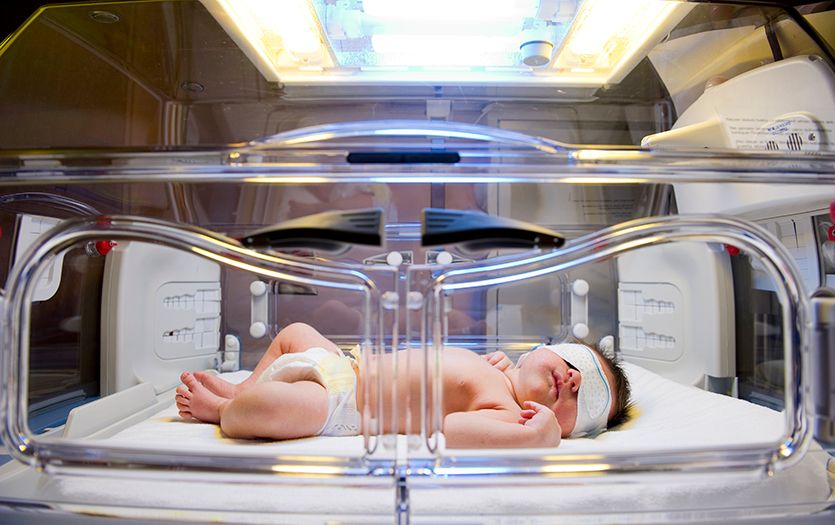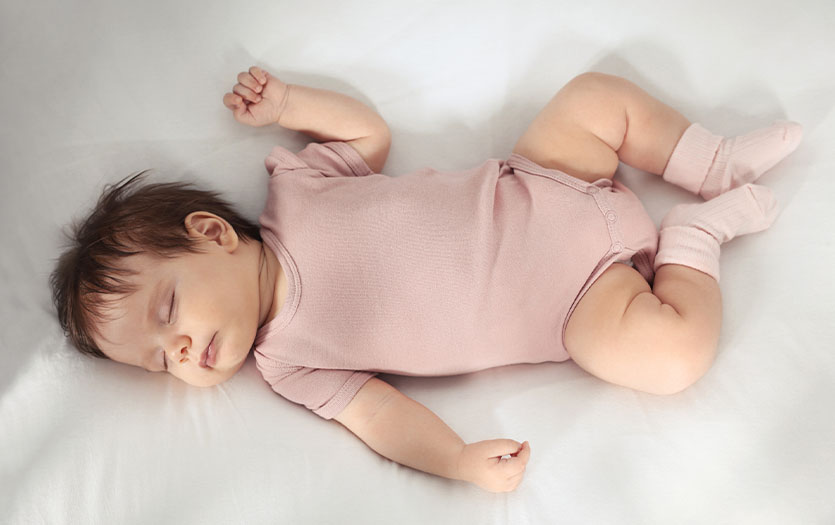
You wait 40 weeks to bring your baby into the world. They arrive and then the unexpected happens. Approximately 60% of full-term infants are born with jaundice, a condition that impacts the color of the baby’s skin and eyes. In this post, we discuss what causes this complication and how it will likely be treated.
What is jaundice in newborns?
While you are pregnant, your liver gets rid of a substance called bilirubin for your baby. Bilirubin is a yellow substance that's made when the body breaks down old red blood cells. It leaves the body through urine and stool.
After your baby is born, their liver must take over this job. But many newborns can't get rid of bilirubin as fast as they make it. This results in a buildup which causes a yellow tint to the baby's skin and the white part of their eyes. This coloration is a sign that there's too much bilirubin in the baby's blood, known as hyperbilirubinemia (hy-per-bil-ih-roo-bih-NEE-mee-uh), more commonly called jaundice.
How serious is jaundice?
In healthy babies, some jaundice almost always appears by the time they are 2 to 5 days old. It usually gets better or goes away on its own within a week or two without causing problems. Many babies have left the hospital by the time jaundice starts, so your child’s doctor may want to do a follow-up exam. If you are nursing, it may be normal for your baby to have very mild jaundice throughout breastfeeding.
In rare cases, jaundice can get worse and cause complications, such as brain damage (kernicterus). This is one reason it’s important to call your doctor if you notice signs that jaundice is getting worse. They can assist with treating the extra bilirubin. You may be able to treat your baby at home with a special type of light, called phototherapy.
What causes jaundice in newborns?
In most cases, babies have what's called physiologic jaundice, which occurs because their organs aren't yet able to get rid of excess bilirubin effectively. This type of jaundice usually appears gets worse for a few days, and then usually goes away in about a week or two.
In rare cases, jaundice may be caused by other things, such as an infection, a problem with the baby's digestive system or a problem with the mom's and baby's blood types (Rh incompatibility).
How is jaundice in newborns treated?
Your baby will need treatment if the bilirubin level is above the normal range. They will be put under a special light for phototherapy. The skin absorbs the light, which changes the bilirubin so that the body can more easily get rid of it. The treatment is usually done in a hospital, but babies sometimes are treated at home.
Your baby might need follow-up tests to check their bilirubin. Be sure you know the date, time and place of any follow-up testing appointments.
Don't try to treat your newborn by placing your baby in the sun or near a window. Special lights and controlled surroundings are always needed to treat jaundice safely.
If a health problem caused the jaundice, your baby may need other treatment. For example, a baby with severe jaundice caused by Rh incompatibility may need a blood transfusion.
How can you care for your newborn who has jaundice?
If your baby has jaundice, you have an important role to play.
- Look closely at your baby's skin two times a day to make sure that the color is returning to normal. If your baby has dark skin, gently press their skin on the forehead, nose or chest. When you lift your finger, check to see if the skin looks yellow.
- Take your baby for any follow-up testing your doctor recommends.
- Call the doctor if the yellow color gets brighter after your baby is 3 days old.
- The best thing you can do to reduce jaundice is to make sure that your baby gets enough to eat. That will help your baby's body get rid of the extra bilirubin.
- If you are breastfeeding, feed your baby about 8 to 12 times every 24 hours.
- If you are feeding your baby from a bottle, stay on your schedule (usually about 6 to 10 feedings every 24 hours).
- If you aren't sure that your baby is getting enough milk, ask your doctor, a nurse, or a lactation consultant for help.
Call your doctor or seek immediate medical care if:
- Your baby's yellow tint gets brighter or deeper.
- Your baby is arching their back and has a shrill, high-pitched cry.
- Your baby seems very sleepy, is not eating or nursing well, or does not act normally.
- Your baby has no wet diapers for 6 hours.
Watch closely for changes in your child's health and be sure to contact your doctor if your baby does not get better as expected.
Copyrighted material adapted with permission from Healthwise, Incorporated. This information does not replace the advice of a doctor.



